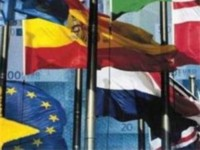European renewable energy growth 'outstripping forecasts'
 The rate of growth seen in the European renewable energy
The rate of growth seen in the European renewable energysector will help EU countries to easily meet and exceed targets set
for 2020.
Brussels - Europe is on track to “clearly surpass” its renewable energy
targets for 2020, according to the European Renewable Energy
Council.
A report from the
European
target=”_blank”>Renewable Energy Council (EREC) on the tenth
anniversary of its foundation has shown that 2010 green energy
objectives set out in 1997 have been surpassed by a significant
margin.
Renewable energy
White Paper targets for 2010 have already been exceeded and that
even the 2020 target is expected to be surpassed.
“All forecasts on
the expansion of renewable energy have consistently been surpassed.
What was thought of in the 1990s as ambitious targets for 2010 were
already achieved or even exceeded in 2009”, said the President of
the European Renewable Energy Council (EREC), Arthouros Zervos at
the celebration of EREC’s 10th anniversary.
According to latest
figures, photovoltaic for example, reached a cumulative installed
capacity of 16 GW in the European Union in 2009. This is more than
five times higher than the target foreseen for 2010 in the 1997
European White Paper.Current installed capacity for solar energy in
the EU is now 16GW, five times higher than the 1997 targets, while
the geothermal energy generation capacity has tripled the amount
forecast.
Geothermal heat
has, at the same time, already exceeded three times the installed
capacity projected in the White Paper, while wind energy exceeded
its target of 40 GW by more than 80 per cent. Wind energy’s
cumulative installed capacity accounted for 75 GW last year.Building upon this
success story, and giving the dedication of the renewable energy
industry the full credit it deserves, even in economically
challenging times, we are convinced that Europe will not only meet
the binding target for 2020 of at least 20%, but clearly surpass
it”, stated Christine Lins, Secretary General of EREC.This optimism is
supported by the 21 National Renewable Energy Action Plans (NREAPs)
currently available. Due to the new renewable energy directive, EU
countries have to submit to the European Commission a national
action plan outlining how they intend to reach their renewable
energy target. At least 13 Member States already expect to exceed
their binding 2020 target.“Given the progress
in recent years and the forecasts on the expansion of renewables by
Member States themselves, it is surprising that the Commission
assumes that there will be a significant drop in renewables
investments after 2020”, said Arthouros Zervos referring to the
European Commission’s recently released 2009 update of its energy
scenarios “EU energy trends to 2030”.“Though the new
Reference Scenario projects that Europe meets its 20% renewable
energy target by 2020, it foresees stagnation towards 2030”.
According to the Commission renewable energy would account for only
22.8% by 2030.Christine Lins
pointed out that, though such stagnation in renewable energy growth
after 2020 is somewhat unrealistic, “in view of the large renewable
energy investments that are already planned in the years ahead, it
is soon necessary to start discussing a stable renewable energy
policy framework beyond 2020.”Later this month,
EU environment ministers will be congregating in London to discuss
target=”_blank”>renewable energy matters at the
target=”_blank”>European Future Energy Forum.
You can return to the main Market News page, or press the Back button on your browser.

